When content aligns with search intent, users find what they need faster, reducing bounce rates and increasing dwell time. Semantic optimization structures content for logical flow, entity connections, and deep topical coverage, making it easier for users (and search engines) to navigate. In summary, SEO is all about optimizing content, building authority, and improving the overall user experience on your site.
- Off-page SEO is closely related to media marketing, digital PR, and brand management.
- Many people think that content length is one of the ranking factors.
- These tags help search engines to read and understand the content better.
- Optimizing for Google Search is particularly important due to its unique algorithms and dominance in the search market.
- Their direct benefit is increased organic traffic, and their indirect benefit is having a common framework (checklists) to use before publishing content on the site.
- Make sure that customers leave happy and that this experience is positive, offline and online.
Once you find keywords you want to rank for, you’ll need to find out how hard it will be by evaluating the competition. It is usually expressed with the metric called keyword difficulty. In the past, content creators did keyword research only to find the keywords with high search volumes. So if you make money with your website in any way, a quality paid keyword tool is a great investment that will pay off sooner or later. SEO is all the actions you do to make Google consider your website a quality source and rank it higher for your desired search queries. Understanding the core components and frequently asked questions about SEO can provide a solid foundation to build a thriving online presence in today’s competitive digital space.
Adding a bunch of keywords here won’t help you rank – search engine algorithms have ignored this tag for ranking purposes for years due to abuse (in the form of keyword stuffing). You are busier than ever, thanks to leads flowing in from search engines. Partnering with a quality SEO firm gives you the expertise needed to generate more business from organic searches. As a result, SEO has changed from optimizing fixed criteria to working toward optimal user experience. Smart SEOs understand that they have to go beyond backlinks and content. They have to understand the needs of searchers in the context of a keyword.
Common SEO Practices
SEO is short for search engine optimization, and though it may only be three letters long, it can make a world of difference in your digital marketing strategy. Strategic keyword research is a must-have in any SEO’s toolbox, as it is the process of finding relevant phrases a website should rank on and optimizing pages, particularly content, for those phrases. Unique, high-quality, relevant content that is authoritative, optimized, aligns with a website’s overall theme and captures the interest of the site’s target audience is key to any SEO content strategy. Considering that Google processes billions of search queries daily, organic search results are a very large slice of a very large pie. BHS Links And while there is some up-front and ongoing investment required to secure and maintain search engine rankings, every click that sends traffic to your website is completely free. Along with these ads, off-page SEO factors like external links and strong link-building strategies help you stand out in organic listings.
If you have a post about hiking tips and you have two backlinks, one from a post about outdoor sports and the other from a post about politics, the former backlink is much more valuable. They are not the same and while the PageRank metric was discontinued, the PageRank algorithm is still a part of Google’s ranking. Link equity (also called “link juice”) is a term used to describe the authority a page transfers to another page through a link. Featured snippet (sometimes called “position zero”) is a selected search result that appears above the standard 10 results in Google search.
With Moz Pro, you have the tools you need to get SEO right — all in one place.
Customer data and behavior analytics tools can give content managers insight into the kind of content site visitors want. An SEO strategy can take anywhere from three months to two years to offer significant ranking improvements, whereas an SEM campaign can increase an organization’s web traffic within hours. SEM ads offer marketers a quick way to get their brands, content and products in front of their target audiences.
Rank
Since landing pages are built to convert, their meta descriptions should do the same — by pulling in the right audience from the search results with a clear promise of value. When a search term matches part of your meta description, Google highlights it in bold, making your snippet stand out in the search results. To write a meta description, you should combine technical best practices (right length, proper keyword use, correct placement) with clever writing (clear benefits, emotional pull, actionable language). Bethan is a B2B marketer and entrepreneur, with over 12 years marketing experience leading to Marketing Director level. Bethan knows what it’s like to start your own businesses, they are a regular speaker at international conferences, and podcast host of “The Brave”. I’ve not met KPIs in the past because, frankly, some of the material we were producing wasn’t good enough and didn’t hit the mark with our audience.
